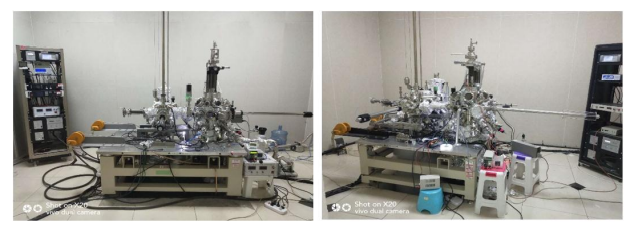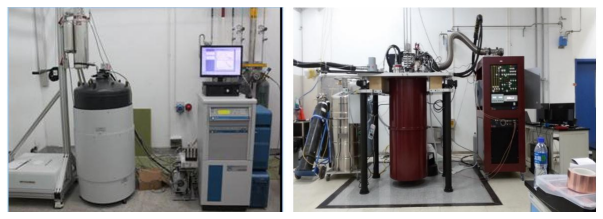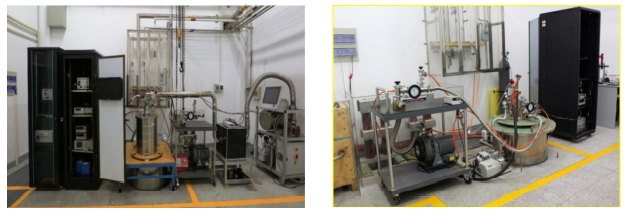Research subjects and backgrounds, including research objects and significance.
Quantum spin physics team: Spin, an intrinsic quantum number of matters, plays a crucial role in fundamental condensed matter physics and advanced technological applications. The relevance of considering the spin degree of freedom in solids with the discovery of giant magnetoresistance and quantum spin Hall effect has ushered in or bring new concepts into the fields of spintronics, topological matters, strong correlated system, low dimensional physics, etc. Many active and deep spin-related research frontiers occur in the overlap of these different fields. Our team, encompassing researchers in several disciplines and in close collaboration with Wuhan high magnetic field center (WHMFC), cooperates to study the spin-related fundamental and applied scientific problems at a level that each disciplines could not achieve on its own.
The current research efforts in our team focus on the following topics.
A) Topological phases of matter
One great achievement of condensed matter physics in the 1980s was the realization that topological concepts are needed for describing certain phases of matter which do not fit into the symmetry breaking paradigm. The adventure of topological insulators since 2005 reveals that the interplay between symmetry and topology can give rise to an even richer plethora of phenomena such as quantization of physical responses, fractionalized excitations, robust edge states, special quantum entanglement structure. These serve as a vivid illustration of emergence in many body systems. More importantly, the topological phases of matter are not rare but very common in solids due to the spin-orbit coupling effect which implies a great potential for topological phases of matter in building next-generation electronic devices and performing topological quantum computation. Scientific Research 97
B) Low dimensional superconductivity
Superconductivity is one of the most important issues in condensed matter physics. In recent years, due to the rapid progress in material synthesis and nano-fabrication, many exotic phenomena about the superconductivity in low dimension (1D and 2D) has been observed in experiment. The celebrated examples are: the quantum oscillation in Pb ultrathin film; Ising superconductivity in few layers NbSe2; the unconventional interface superconductivity insingle layer FeSe on SrTiO3; the possible unconventional superconductivity in twisted bilayer graphene. In principle, due to the quantum confinement effect, the properties of superconductivity in low dimension should be quite different from that in the bulk. Meanwhile, from the point of view of application, it is easier to manipulate the superconductivity properties in low dimension via doping or external field.
C) Low dimensional magnetism and spintronics
The detection and manipulation of spin states in low dimensional systems not only deepen our fundamental understanding towards the quantum behavior of spin states, but also pave the way for developing applications in spintronics and quantum information, which makes it one of the central topics in condensed matter physics. High magnetic field can directly interact with the spin and orbital degrees of freedom, which provides an efficient probe and a control knob for the quantum spin states.
D) Functional material design
The performance of silicon-based transistors, memories and other devices, when reduced to nanoscale, would also be seriously influenced by the quantum effect. Herein the two-dimensional (2D) van der Waals materials, with atomic thickness, high mobility, and high on/off ratio when used as transistors, are promising candidates to replace the current semiconductor materials in microelectronics and to sustain the Moore's Law for longer time.
Experimental facilities to support Quantum Spin Physics team:
We have equipped two ultrahigh vacuum systems combined with molecular beam epitaxy (MBE) growth low temperature and high magnetic tunneling microscope/spectroscopy (STM/STS). Wuhan National High Magnetic Field Center also built 8 experimental stations for studying electrical transport, magnetic properties, magneto-optics and electron spin resonance (ESR) that can be used in parallel, equipment such as low temperature cryostats (from 50mK to 400K), high pressure cells and various lasers with associated optical systemshas been installed.

Two STM/STS systems

Left : 16T PPMS; Right:Integrated experimental station 7mK+14T+pressure cell.

Left: Ultra low temperature experimental station (39 mK); Rigth : High pressure experimental station (integrated with high magnetic field and low temperature)
Director: Liu Xin
Associate Director:Lu Chenliang, Gao Jinhua